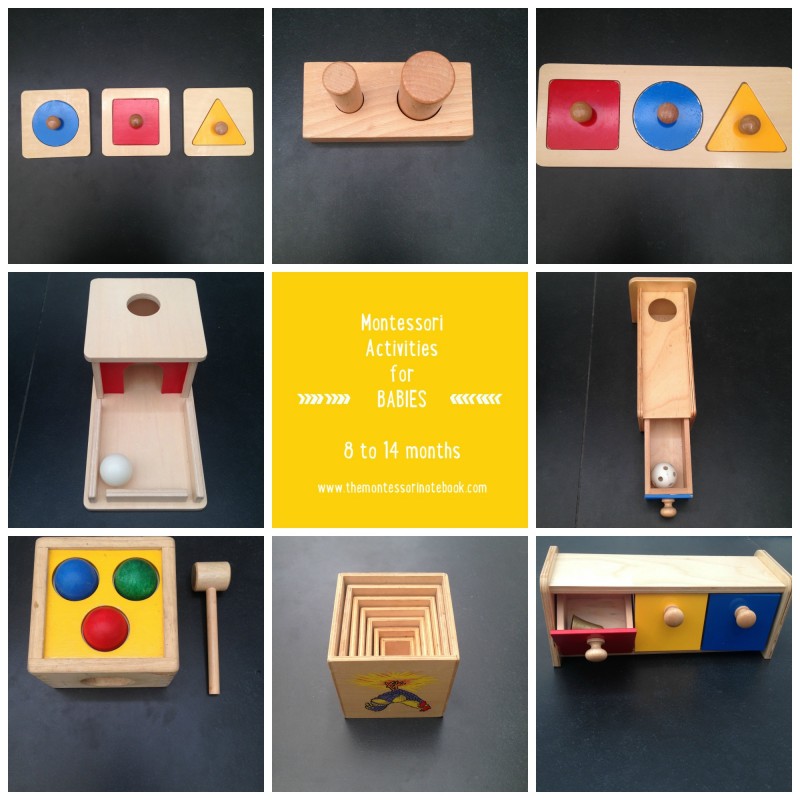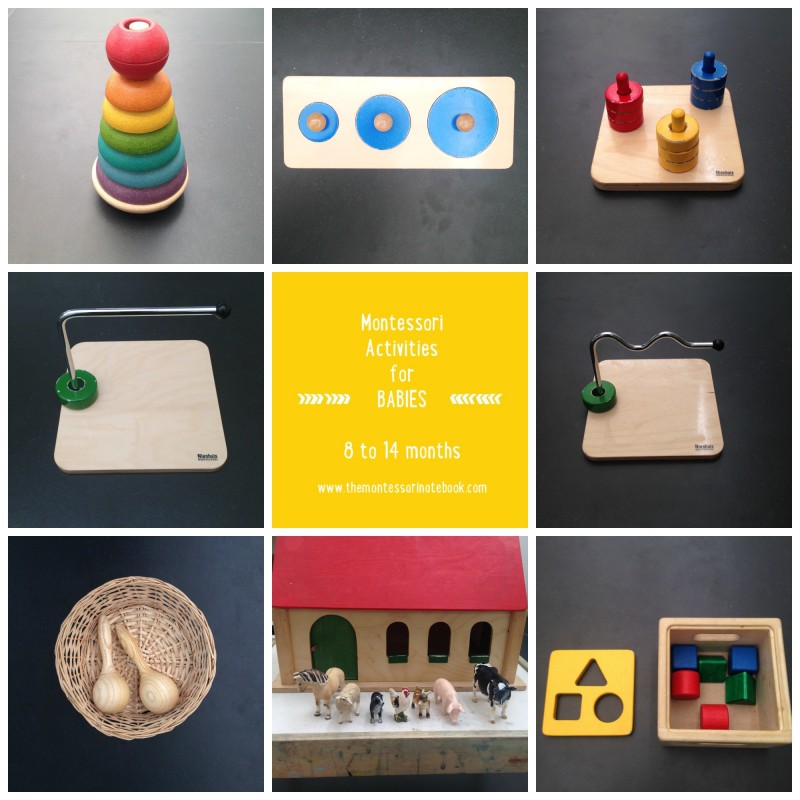What? Montessori for babies?
Sometimes people are surprised to learn that Montessori principles can apply from birth. And most commonly I hear people say, “if only I’d known about these ideas earlier”.
So here are all my favourite ideas for introducing Montessori even to the youngest children.
If you have toddlers, preschoolers or older children, there is something for you too. You’ll find that many of these ideas apply to them as well. And you are sure to be able to pass on these ideas to friends with new babies too.
So why begin from birth? Or even conception?
I encourage parents to use Montessori ideas as early as possible. There is already so much you can do – how you touch the baby, talk to the baby, set up your home, and how you respond to their efforts at communication.
A baby has an unconscious absorbent mind. They are taking in impressions of the world around them without any effort. And they absorb the good as easily as the bad.
So I love to create beautiful environments for them to absorb, speak with rich language for them to take in, and touch gently and with their permission in a respectful way.
You can already lay the foundations to the way they explore and how they feel about themselves. For example, giving them the opportunity to work out how things respond to their touch, allowing time for them to explore their space, and responding to their efforts.
He is by no means passive. While undoubtedly receiving impressions, he is an active seeker in his world. He himself is looking for impressions.”
– Maria Montessori
Communicating with babies
One of the first things I noticed when I first visited a Montessori environment is how respectfully the teacher spoke with the child. The same thing applies even when we speak with an infant.
They understand everything even from a young age. So even if they cannot yet answer back:
1. Ask them questions, e.g., “Do you hear the fire engine?”
2. Show them things, eg, “Look at the tulip. It has red edges on the petals.”
3. Let them know what is happening, e.g., “We are getting ready to visit Grandma…”
4. Use rich language, e.g., use the real names of trees, flowers, animals, dogs, vehicles etc
5. Respond to their attempts to communicate
6. Repeat the sounds they make
7. Take turns with them – let them poke out their tongue and do the same. They are learning how to take turns in a “conversation”.
8. Read books – it is never too early to start with books. Begin with black and white books, then simple word books with beautiful pictures, and move onto rhyming books. Around 1 year old, lift-the-flap books are great too.
The most important thing is to get their permission before you handle them. If you are going to change their nappy, first tell them, “We are going to change your nappy.” When you get in the habit of doing this, you may even see them begin to raise their head as if to say, “I’m ready”.
Montessori materials for babies
1. Natural materials
As with older children, we are very conscious to offer materials made of natural materials and fibres for example, wood, rubber, metal, paper, different fabrics. They love to grasp and explore these materials, particularly with their mouths.
2. Less is more
I always suggest to buy less than you think and, rather than needing to buy a lot, also let your child explore household items. The baby is able to choose more easily when there is less available and they can more deeply explore these items.
3. Observe your child to know what to offer them
I often get asked “How do I know what to offer?” And my answer is to observe them. If they lose interest quickly it may be too easy or even too difficult. Allow for some struggle, but with enough possibility for success.
Every time you offer a toy, observe your child to see how they respond, to see what they are working to master. If they are grasping at a bracelet, offer more grasping opportunities. When they start to pull up, set up the environment to have more opportunities to pull up in their space.
Some Montessori mobiles for newborns to around 3 months
There is the most beautiful series of mobiles for Montessori babies to follow their development. Some of my favourites are:
- The Munari is a black and white mobile balanced against a glass sphere. Just right for a newborn. Here is an example here: http://www.pinterest.com/pin/111745634477273414/
- An octahedron mobile made with reflective primary colours, like this one here: http://www.pinterest.com/pin/111745634477273421/
- The Gobbi is for introducing different shades of colours for babies around 2-3 months. Look here: http://www.pinterest.com/pin/111745634480387462/
Some Montessori grasping toys for babies 3-8 months
Once a baby is able to grasp from around 3 months, you can offer simple wooden rattles and gorgeous grasping toys like these: http://www.pinterest.com/pin/111745634477273394/.
Keep offering a variety to explore, one at a time. And only change when the baby loses interest.
Don’t forget household objects are wonderful to explore for babies – your wooden spoons and utensils will provide lots of interest for a curious baby.
I also love these patchwork balls which can be hung and batted at by the baby, or used for an older baby to encourage crawling.
Special note: Allow them to mouth everything – this is how they explore the world around them.
Some examples of Montessori materials for babies from 8 to 14 months
Here are some of the materials we use in our classroom with babies from 8 to 14 months.
 1. One piece shape puzzles
1. One piece shape puzzles
2. First puzzles – with cylinders
3. Three piece shape puzzle
4. Posting box
5. Posting box with drawer
6. Ball hammering – used first with the palm of the hand, then the hammer
7. Nesting boxes
8. Opening and closing drawers
 9. Stacker
9. Stacker
10. Circle puzzle with large knobs
11. Threading by colours
12 and 13. Threading on a horizontal dowel
14. Maracas – and other simple musical instruments
15. A farm and farm animals
16. Shape sorter
Encourage movement
Children spend a lot of time capsules, bike seats, car seats, baby wraps, and bouncer chairs. Here are some ideas to counter all this sitting and restricted movement:
1. Allow lots of time for free movement
A movement mat in the living area allows space for the baby to explore their bodies, practising to stretch, bring feet to mouth, roll over and eventually to wriggle to reach things and eventually crawl.
2. Keep clothing simple
Make sure it is easy to move in, keep feet uncovered as much as possible to allow them free movement and to grip with their toes, and keep to natural materials.
3. Let them experience a variety of settings
I always carried a small mat with me so I could put the baby on the ground at the park, at someone’s house etc while my toddler explored.
4. Provide stimulating materials to engage with
They will want to work to reach, touch and explore them.
5. Adjust your environment to provide new challenges
As they start to pull up, you can add a low ottoman or bar on the wall to pull up on. A push wagon provides an opportunity for a child to practise walking.
6. Collect a basket full of soft balls
Once crawling, the favourite activity in our class is a basket of soft balls to chase after, to practise rolling and catching, and easy to grasp with small hands.
Special note: Try to avoid holding your child’s hands so they can walk. Their hips are probably not ready to support themselves. Instead create spaces that allow your child plenty of opportunities to pull up and furniture to cruise along.
It’s not about getting your kids to be the first to walk. We are making the baby feel competent, confident, and excited to constantly explore, learn, and grow.
In summary
Make time:
* to observe your infant
* to offer activities that meet their needs right now
* to allow them free movement
* to have lots of rich conversation
And handle them, and speak to them, with respect.
You really can use Montessori for babies. All these Montessori principles apply to an infant and, indeed, to a child of any age.
Want more information about babies?
* Purchase my book The Montessori Baby (co-written with Junnifa Uzodike)
* Follow my 2-hour workshop, Montessori for Babies
Further reading
* Understanding the Human Being by Silvana Quattrocchi Montanaro
* 60 activités Montessori pour mon bébé by Marie-Hélène Place
* How to Raise an Amazing Child by Tim Seldin
* links to my Amazon store